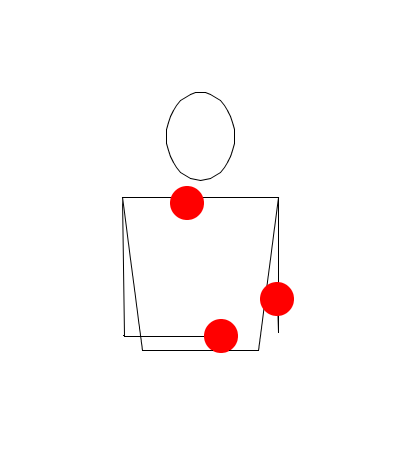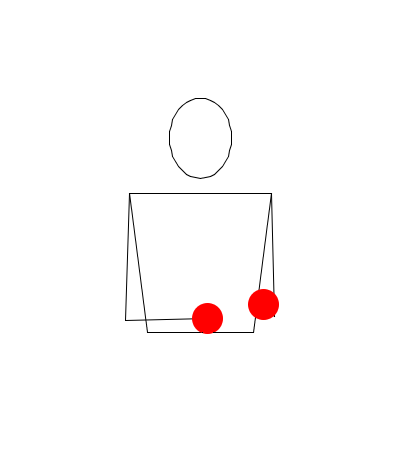Hands of Time
Other Tutorials:

Hands of Time is a three ball
pattern established by
Idiosensory. It can be thought of as a fusion of the Windmill
pattern with a highly distorted Shower, where the horizontal pass is made at
an upward angle across a larger distance. This leads to a more voluminous pattern with
dramatic arm motions, relying more on visual impressiveness than technical
difficulty.
To begin learning Hands of Time, start with one ball in each
hand. Simultaneously make a high vertical throw from your dominant hand and
a pass from your non-dominant hand to your dominant hand. The pass should be
angled diagonally upward from the center of your body and caught by your
dominant hand at between shoulder to forehead height. Your dominant hand
should then be extended such that it is slightly lower than the high ball.
As that ball begins to descend your dominant hand will follow beneath it
(and slightly off to the side). The high ball will then be caught by your
non-dominant hand.
Practice this on both sides. To add in the third ball, start
with one ball in your dominant hand and two balls in your non-dominant hand.
Make the same simultaneous throws you just performed in step one, but this
time, as the high vertical ball descends, you are going to make a crossing
throw from your non-dominant hand before reaching over to grab the high
ball. You are then going to cross your dominant hand, which has just
finished following the high ball's descent, over to the non-dominant side of
your body, where it will make an under-the-arm throw back toward the center
of your body. This should feel very similar to the Windmill. Your dominant
hand will then uncross and catch the ball previously thrown by your
non-dominant hand, and then also catch its own under-the-arm throw.
As shown, practice this on both sides. You have just
completed one full cycle of the Hands of Time. To run the pattern
continuously simply make the same simultaneous pair of throws (high throw and
pass) you made in step one, except on the opposite side of your body,
catching the last throw of the previous cycle with your dominant hand (the
hand that made the pass). This will set you up for the next cycle, which
will be a mirror image of the previous one. Hands of Time is an easy
pattern to learn, but making the arm motions appear fluid and smooth can
take quite a bit of practice.
